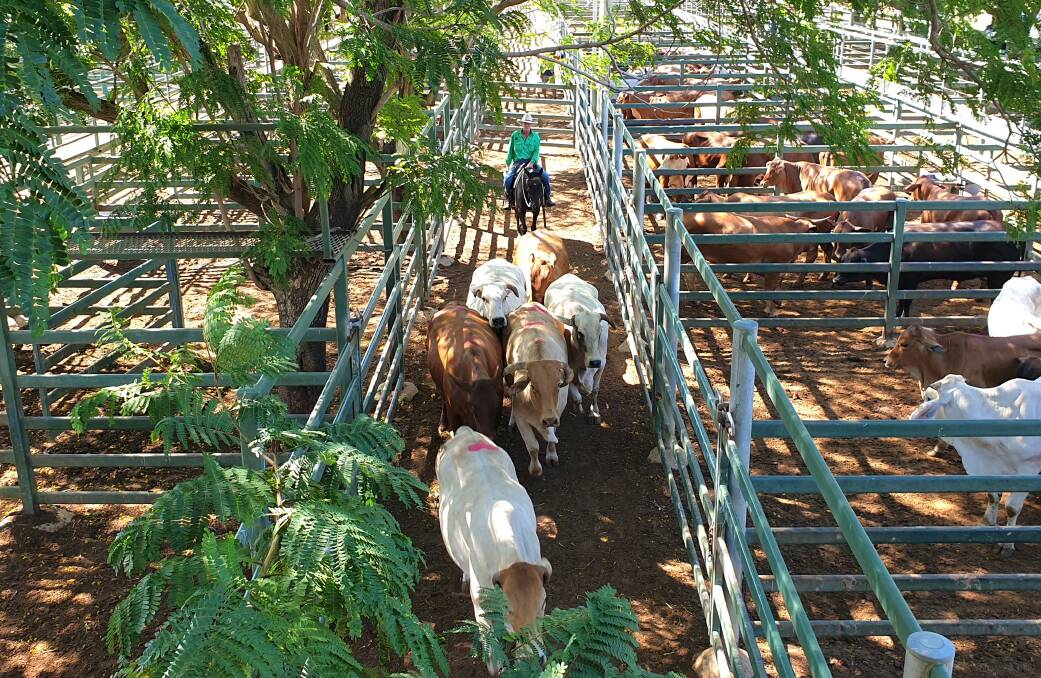
SHOULD this week's forecast rain fill in many of the dry patches in Queensland cattle country, the upward pressure on the cattle market will come hard and fast.
Subscribe now for unlimited access to all our agricultural news
across the nation
or signup to continue reading
So say agents, who report there are plenty of operations in the country's biggest cattle producing state that will stop offloading and start restocking overnight on decent foundation winter falls.
With a Bureau of Meteorology eight-day forecast that has colour in every part of Queensland, plus most of NSW and Victoria, restocking fervour could see new heights in the next few weeks.
Some of the dryer central and north-west parts of Queensland are expecting more than 50mm.
The Eastern Young Cattle Indicator has held steady this month, dropping only a cent per kilogram carcase weight in the past week to sit today at 859.75c. It's still close to a full dollar above year-ago levels.
It's restockers, rather than any of the drivers at play on the demand end, that have underpinned the strength in the market since widespread rain began a year ago.
Consensus has been it won't be until producers reach an optimum level of stock - when their paddocks are brimming with animals - that demand will start to slacken off at sale yards.
In Queensland, the situation was still a long way from that, Elders northern livestock manager Paul Holm said.
"There are dry patches everywhere. There is really no district where some have not missed out on rain," he said.
"There are plenty of cows with little feed in front of them. If that changes there will be another reduction in the number of females on off, and another wave of demand for more females."
This week's rain could change the dynamics in Central Queensland in particular.
Terry Ray, Nutrien Emerald, said plenty of producers have been looking over their shoulder for a good fall ahead of winter, with rain received so far very isolated.
"Prices have been appealing enough to make it a pretty easy decision to offload while it remained dry," he said.
"But as soon as they have moisture they will hang on to what they have. Some might sit back and let pastures re-establish but some will want to buy-in more quickly.
"From April on, the market tends to slip away but good rain now will keep a floor in it."
Head of Agribusiness Insights at ANZ Michael Whitehead said it had definitely been rain and grass that had taken the cattle market to brand new territory.
"At the same time, feedlotters - one of the other big players - are seeing their economics reasonably good with relatively low costs of grain, and that is keeping them active," he said.
"Processors are really feeling the pinch, though. They are struggling to make some sort of margin between high cattle prices and domestic and export demand."
While consumer demand would likely lift as some of Australia's export markets recover from COVID, there were plenty of unknowns, he said.
The US, for example, is being challenged by high prices.
"But on the other hand it's clear they'd rather have our manufacturing beef over the South American equivalent," Mr Whitehead said.
ANZ's thinking is it could be a decade-long herd rebuild. Looking at the amount of cattle being held back from the market at the moment, tight supply could be the story until 2029, Mr Whitehead said.
"If the season keeps going well, and consumption demand holds up, prices could stay strong for quite a while," he said.
Rabobank's latest Beef Quarterly reports the EYCI averaged 867c/kg in January, 64 per cent higher year-on-year.
Heavy steer prices were 19pc higher year-on-year.
ALSO SEE:
Start the day with all the big news in agriculture! Sign up below to receive our daily Farmonline newsletter.


